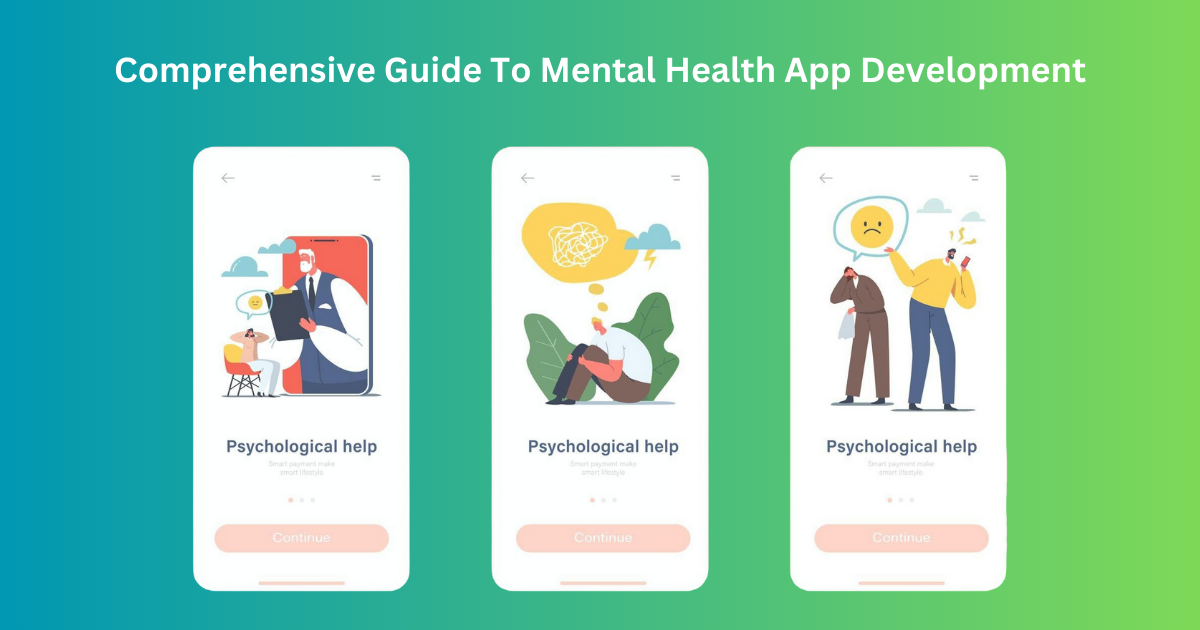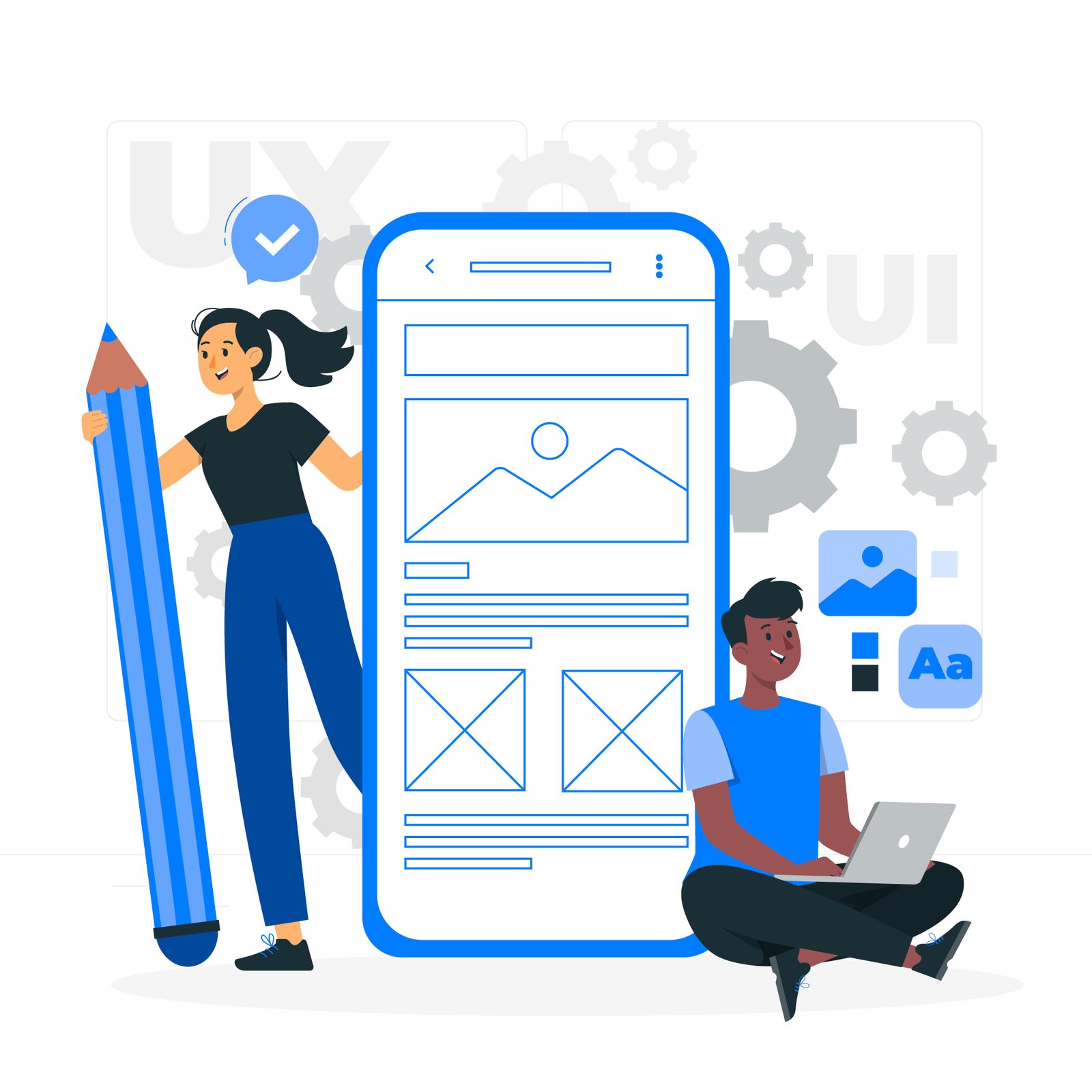Over the past few years, mental fitness has come to be a international issue, due to which the concept of mental health apps has began evol elve. Mobile applications are the most relevant and effective tool for delivering affordable, accessible, personalised care. Mental health app development is the process of designing, developing, or recommending applications that may help people maintain good mental health, such as those for stress, anxiety, depression, etc. Whether the app is intended for self-help, supporting therapy, or documenting mood, the mission is always to improve the mental state of everybody who uses the app.
Starting with this post, the blog will aim to discuss the basic and advanced issues concerning the development of mental health applications and the fundamental concepts, technologies, security techniques, and methods to develop these applications that are easy to use and access. This manual is relevant whether or not you’re a developer, an entrepreneur, or an intellectual health care issuer, because it will supply practical suggestions on designing an app which could enhance humans’ mental state.
Understanding the Importance of Mental Health Apps
The demand for mental health apps has become louder and more prominent because of the convenience that they also offer and the freedom that the users get to manage their mental health. Such apps can help people with multiple functions such as meditation, tracking of emotions, or even with online therapy or direct clinician consultation in-app. As mental health problems occur increasingly, such application is an effective means of help for those who have no opportunity to rely on in-person psychological counselling or those who can manage a session with a counsellor on their own.
Why People Use Mental Health Apps
There are several reasons why mental health apps are widely used:
- Convenience: Indeed, it means that a client can use the product at any time and in any place without having to make appointments.
- Affordability: Mental healthcare is more accessible, with many often cheaper apps than traditional therapy methods.
- Personalization: Everyone can use apps as they provide personal mental health activities to perform, self-monitoring, and recommendations.
- Anonymity: Social apps let individuals who do not want to get professional help in person or do not want others to know about their conditions find ways to address their mental health needs.
- Self-Help: Many users decide on self-guided solutions that permit them to control their emotions independently.
Key Features of a Mental Health App
When developing a mental fitness app, it’s critical to comprise features to gain users. The following are a few vital components:
1. Mood Tracking
Mood monitoring allows customers to log their emotional states at various times throughout the day, helping them recognize styles and triggers. A suitable mood tracker app development approach ought to focus on intuitive consumer interfaces and integration with exceptional capabilities, along with reminders and daily summaries.
2. Guided Meditation and Mindfulness Exercises
Many customers turn to intellectual health apps for stress relief and relaxation. Guided meditations and mindfulness physical activities, which include breathing techniques or visualisation practices, can be key components of those apps. Integrating audio or video content for these sports activities makes the experience extra interactive and effective.
3. Cognitive Behavioral Therapy (CBT) Tools
Cognitive Behavioral Therapy (CBT) is one of the most famous and influential recovery methods for treating highbrow fitness problemsms. Apps that incorporate CBT sporting activities, inclusive of concept journals, goal placing, and cognitive restructuring, allow clients to exercise these techniques in a virtual tour. Offering users step-by-step guidance on creating terrible idea styles can greatly enhance the app’s cost.
4. Peer Support Networks and Forums
Some users benefit from interacting with others who are going through similar reports. Adding peer support groups or boards for your app permits customers to percentage their tales, offer advice, and offer emotional support to one another in a safe, moderated environment.
5. Professional Therapy Access
For those searching for extra direct intervention, providing access to licensed therapists can be useful. Teletherapy services integrated within the app can connect users with specialists via chat, audio, or video sessions. This can be offered as a premium service or part of a subscription plan.
6. Reminders and Push Notifications
Mental health management requires consistency. Setting reminders for temper monitoring, mindfulness physical activities, or therapy appointments can help customers stay on top of their intellectual health workouts. However, it’s essential to avoid overwhelming customers with too many notifications, as this may lead to app fatigue.
7. Wellness Metrics and Reporting
Providing users with wellness reviews or summaries primarily based on their tracked sports, mood logs, and progress can give valuable insights into their intellectual fitness. Clear, easy-to-read metrics allow customers to see their progress and pick out regions that need more attention.
Choosing the Right Technologies for Your Mental Health App
The proper era stack is vital for developing a successful intellectual fitness app. Here’s a breakdown of the technology typically used in intellectual health app development:
1. Mobile Platforms (iOS/Android)
Your app will likely be built for iOS and Android systems to attain a wide target audience. Using go-platform development frameworks like Flutter or React Native can help reduce development charges and time while retaining constant user revel across platforms.
2. Data Storage
Mental health apps must securely save sensitive data, such as personal records, mood logs, or therapy notes. Cloud-based storage solutions like AWS or Google Cloud are broadly used for stable, scalable data management. Additionally, remember offline skills that allow users to access positive capabilities without an internet connection.
3. Artificial Intelligence (AI) and Machine Learning (ML)
AI and ML can substantially enhance the consumer experience. For instance, AI-powered chatbots can offer instantaneous intellectual fitness assistance and provide personalised tips based on consumer behaviour. Machine learning can examine temper styles and suggest well-being practices tailored to male or female users, developing a greater custom-designed enjoyment.
4. Encryption and Security
Security is paramount in mental fitness app improvement due to the touchy nature of the information being amassed. Implementing cease-to-end encryption for messaging and data storage ensures that consumer information is kept private. Apps must also observe statistics protection regulations like HIPAA (for the U.S.) or GDPR (for the European Union), relying on the app’s goal marketplace.
5. Integration with Wearables
Many proper app development projects are beginning to incorporate records from wearable gadgets, fitness trackers, and smartwatches. By integrating with wearables, your app can collect information about sleep styles, physical interest, and coronary heart fee, which are all key signs and symptoms of average highbrow fitness.
Best Practices for Mental Health App Development
Developing a successful mental fitness app requires more than an advanced generation and capabilities. Here are a few excellent practices to ensure that your app makes a meaningful effect:
1. Collaborate with Mental Health Experts
Consulting with psychologists, therapists, and extraordinary intellectual fitness professionals during the app improvement process is vital. Their input can help ensure the app’s content material and sporting activities are scientifically sound and robust. Mental fitness experts can also assist in designing the app’s interface to make it user-pleasant and calming for people struggling with tension or despair.
2. Prioritise User Privacy
Because mental fitness apps accumulate sensitive, non-public data, user privacy must always be a top priority. Ensure your app complies with local data protection guidelines and offers users clear terms and conditions concerning how their data is used. Transparency builds consideration, which is critical when dealing with intellectual fitness.
3. Focus on Accessibility
Mental fitness apps should be accessible to all, including customers with disabilities. Capabilities like voice controls, adjustable textual content sizes, and colour evaluation alternatives must make the app usable for people with visual impairments or extraordinary accessibility traumatic situations.
4. Emphasise User Experience (UX)
Intellectual fitness apps need to have a smooth and intuitive user experience. Many users may be experiencing stress or tension, so the layout should be easy, calming, and free of useless distractions. Avoid overwhelming users with too many facts or steps to complete a project.
5. Regularly Update and Improve the App
Mental fitness is a hastily evolving field, and customers’ desires can trade over time. Regularly updating the app with new functions, sports, and content material will keep users engaged and make sure the app continues to meet their desires. Moreover, collecting personal remarks through surveys and critics can provide valuable insights for destiny updates.
Conclusion
Mental fitness app development is a profitable and impactful employer that can improve the lives of tens of millions of humans. By integrating features like temper tracking, guided remedy sports, and getting the right of entry to an expert guide, you may create an app that serves as a valuable device for intellectual well-being. Prioritising safety, accessibility, and user enjoyment guarantees that your app no longer best meets technical requirements but also affords an authentic emotional guide.
As the demand for digital intellectual health answers grows, there’s no better time to invest in creating an app that can make a difference. By following the best practices outlined in this guide, you can construct an app that helps customers improve their mental fitness and well-being in significant ways.



